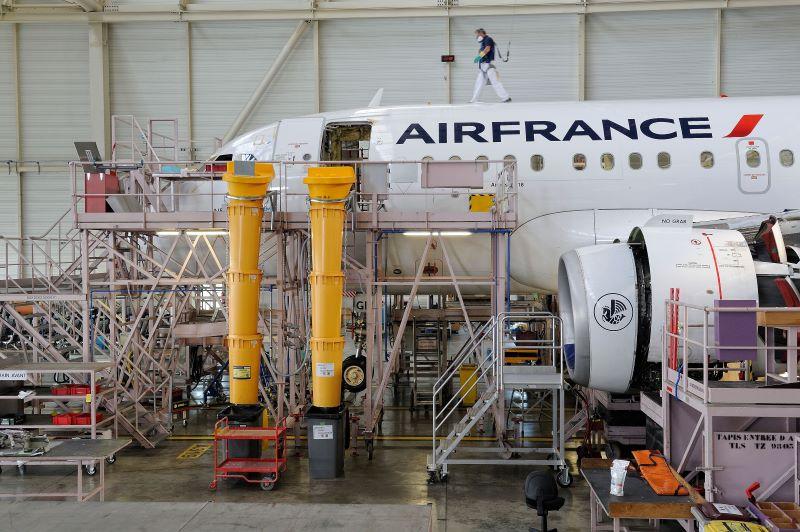Daily Memo: While 2050 Is Far Off, Green Strategies Are Changing MRO Today

The pledge by global airlines to reach net zero carbon emissions by 2050 relies on a host of still-to-come developments.
Among the highest-profile ones from a technology standpoint are a major increase in sustainable aviation fuel use and transport-category aircraft powered by something other than gas turbine engines.
But the push to a cleaner 2050 will trigger some fundamental changes in day-to-day airline operations as well. Signs of these shifts are clearly visible in parts of the aftermarket business, input from executives at Aviation Week’s MRO Europe conference suggest.
Take component maintenance.
In the past, operators prioritized cost and turnaround time when mapping out their strategies. Now, they are more likely to use an actual map to figure out factors like how far a part must travel to get repaired and returned—or even manufactured and shipped out new—for installation on their aircraft. At Iberia Maintenance, such calculations by both customers and the MRO itself are driving decisions to repair more parts internally, said Head of Transformation María Guilarte Polanco.
The push to be more planet-friendly today varies from region to region. Europe and Asia are leading the way, said Ben Moreau, Air France Industries KLM Engineering & Maintenance (AFI KLM EM) SVP Strategy and Business. Customers’ desire to minimize emissions in aftermarket support has led AFI KLM EM to change how it deploys spare parts pools, for instance. Before, factors such as having a pool near a major global hub carried significant weight. Now, some customers want pools closer to their operations, even if it does not save much transit time. The priority, Moreau said, is to cut down the number of trips needed to get a part to an aircraft.
The trend is even evident in airframe and engine services, Moreau said. The last 20 years have seen a push to get large, labor-intensive jobs such as airframe heavy-maintenance checks to low-cost providers. Shops in places such as China and parts of Latin America were built and have grown to serve aircraft often ferried from far away to leverage low labor costs.
Now, however, sustainability strategies are causing some airlines to think twice before flying an empty widebody half-way around the world just to save a few bucks.
The same is true on the engine side.
One ramification is more capacity in some MRO shops in higher-cost regions. “Clearly, we see a big trend in near-shoring maintenance,” Moreau said. “So, we are adapting our capacities in Europe.”
Suppliers also must adapt their basic strategies to align with airlines’ evolving priorities.
“When we talk financial plan, sustainability is embedded in what we do,” said British Airways (BA) Chief Technology Officer Andy Best. “And we expect that from our partners more and more. They have to have a sustainability plan and that plan needs to meet what BA’s aims are. And if you don’t, then it will be difficult to work with us. That’s the bottom line.”




